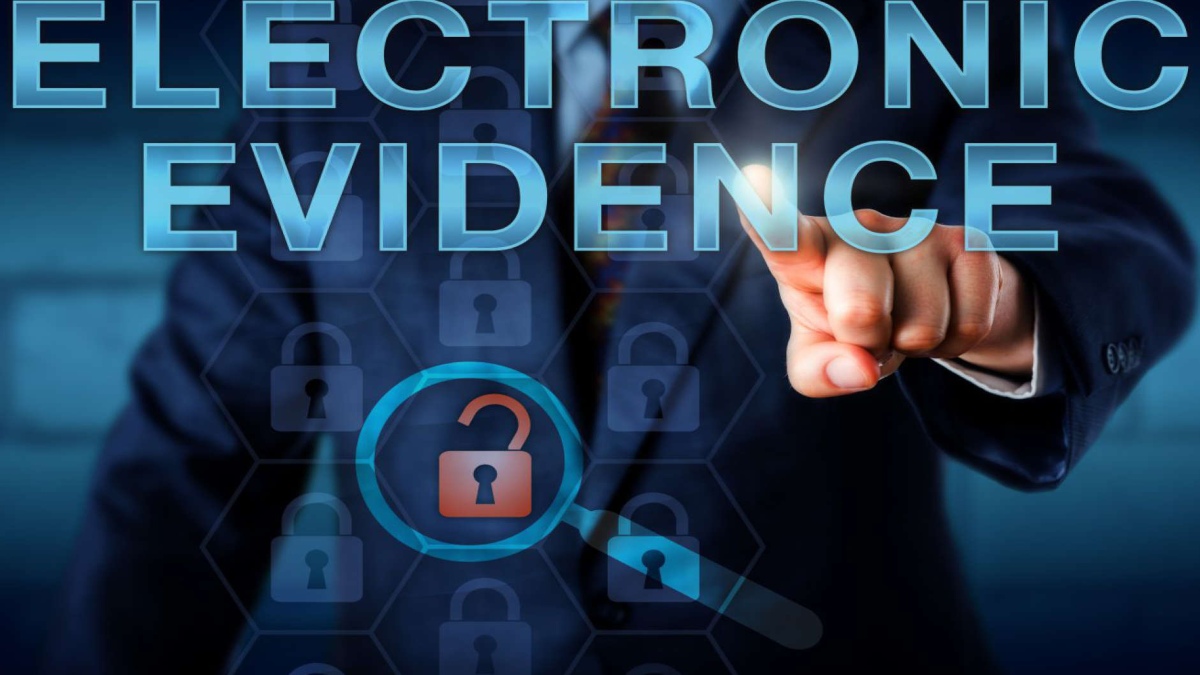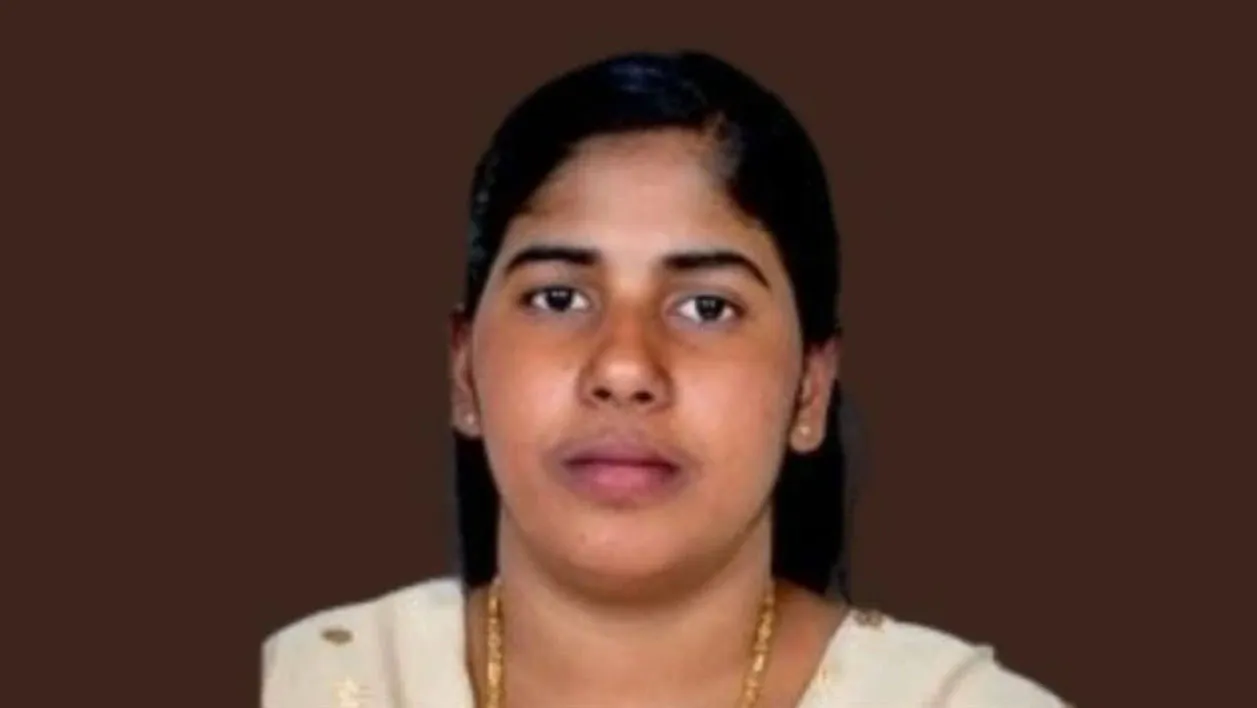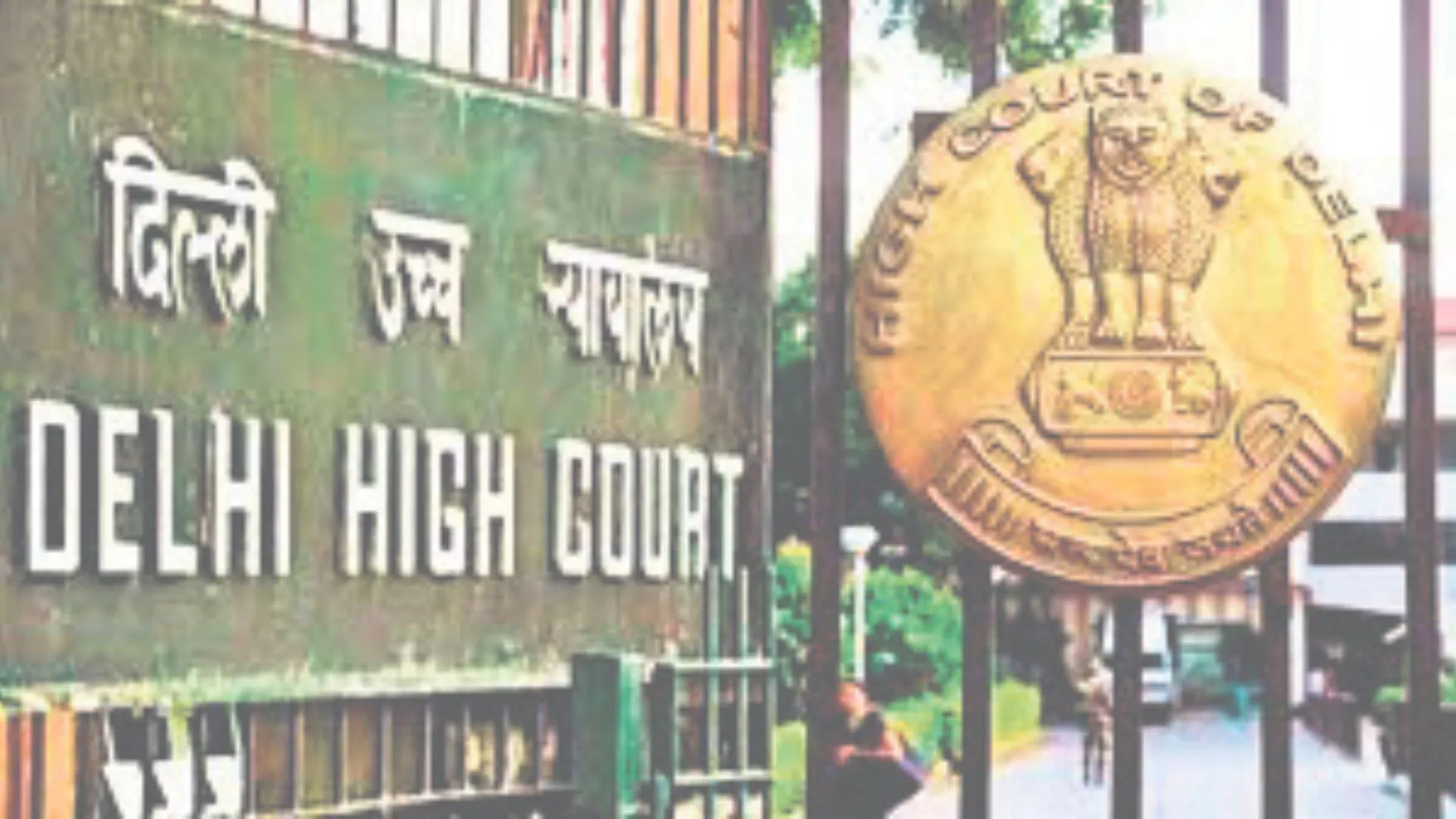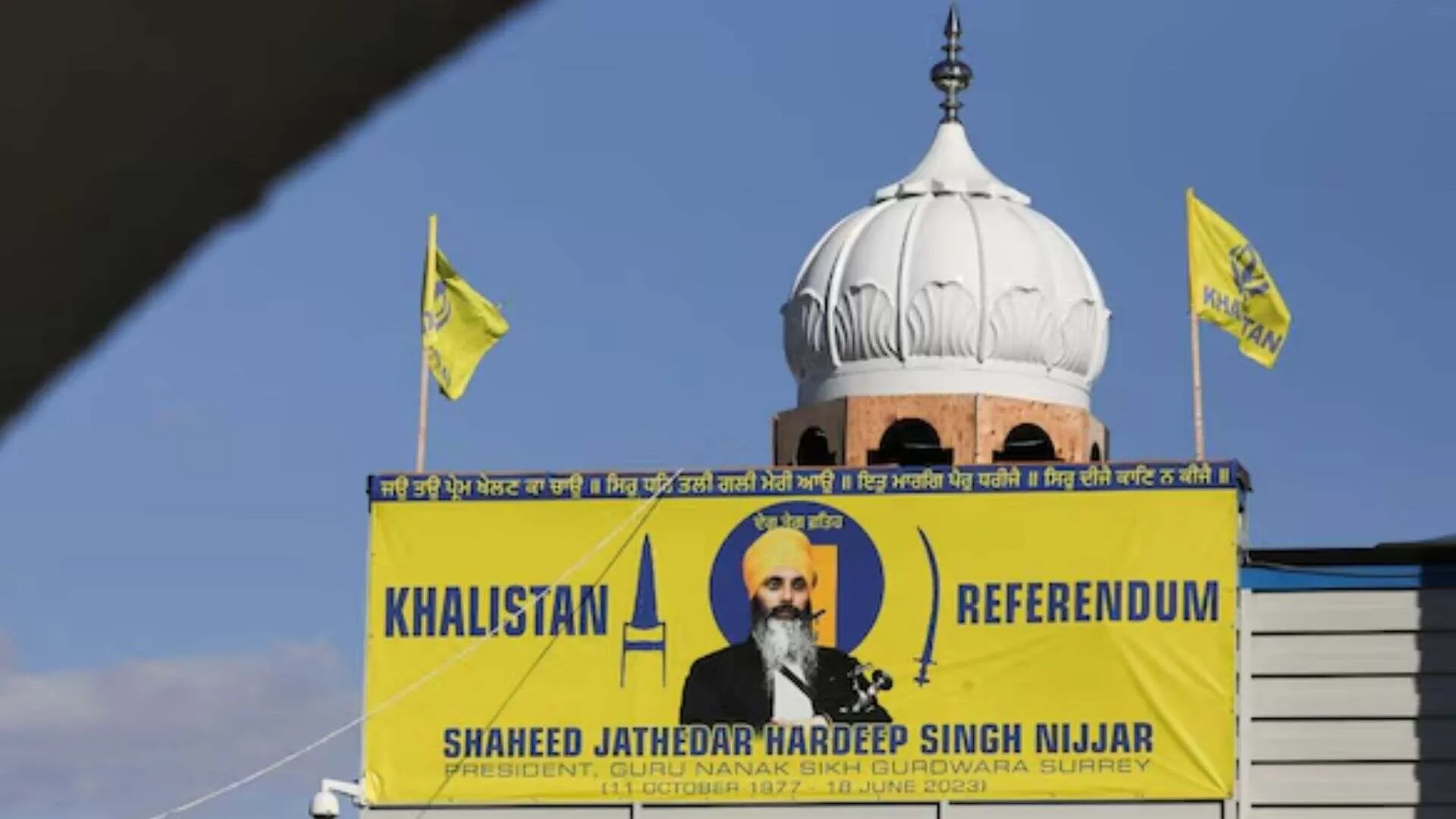INTRODUCTION
It is commonly heard by one and many that the courts anywhere and everywhere function and adjudicate a particular legal matter on the basis of evidence. A fact is deemed true by the court only if it is supported by a credible piece of evidence. Reality in the eyes of court is that which is manifested by evidence.
In modern times, with the advancement of technology, there has been a complete overhaul in the manner in which people work, communicate and interact with others, there has been a great use of technological gadgets and a lot of tasks have undergone digitisation. As a consequence, a lot of data concerning one’s work, communication and various others functions of life gets recorded in the digital format. Since those records can also be used to prove or disprove the existence or non-existence of relevant facts and circumstances of any particular case, the Law of Evidence, had to be adequately amendment, for acknowledging and including the same as an acceptable piece of evidence. The Indian Evidence Act, 1872 which lays down the law, relating to evidences in India incorporated by way of the Amendment of 2000, two sections, 65A and 65B, to deal with electronic evidence and when and how can the same be admissible by the courts in India.
The present work particularly deals with a particular question of law that arose with respect to the application of Section 65B (4) by the Courts. In order to grasp the seminal issue of the paper it may be expedient to appreciate that evidence for a particular fact, produced in court may be in its original form (primary evidence) or it may be a copy of the original evidence (secondary evidence), in view of its availability and feasibility in producing the same in court. This issue of feasibility commonly arises in cases when the relevant piece of evidence is part of a voluminous record of data, which cannot be conveniently produced in its entirety in the court, or is a part of such a computer system or computer network, which cannot be physically produced in the court. In such situations, the respective record, is stored in CDs, Pendrives etc. or the relevant excerpt of the voluminous record is only printed out and produced in the Court. However, 65B (4) provides that before production, the same is required to be authorised and certified by the respective authority, in order to ensure that the credibility and veracity of the same is maintained and any scope of manipulation is done away with, to the best possible extent. Now, with respect to the above stated requirement of certification, the Apex Court of the country (and consequently the various High Courts) had held on to different legal positions. The following text primarily seeks to bring forth the various distinguishing positions which were held by the courts previously and state the law, at the present instance, post decision in the case of Arjun Panditrao Khotkar v. Kailash Kushanrao Gorantyal with respect to the requirements of certification.
SECTION 65B(4) OF THE EVIDENCE ACT
Succeeding Section 65A, which states that the contents of an electronic evidence may be proved in accordance with the provisions of section 65B, section 65B comprehensively lays down the law for the admissibility of electronic records, by clearly specifying as to when a particular electronic record would be deemed to be a document, the conditions which should be fulfilled in respect of a computer output, when would multiple or a combination of computers be deemed to be a single computer when the function of storing or processing information is carried on through them, rules with respect to certification of the evidence by responsible authority and other rules.
Clause (4) of Section 65B lays down the conditions which need to be fulfilled, when a particular part or statement of an electronic record is intended to be given in a proceeding. The section enumerates that the same must be accredited by a certificate which identifies the electronic record containing that statement and which must accompany the electronic record like Compact Disk, Pen drive etc., in which the respective statement has been recorded. Further, such certificate must describe the manner in which the electronic record was produced, state the particulars of the device involved in the production of that record, deal with the applicable conditions mentioned under section 65B clause (2) and finally the certificate must be signed by a person occupying a responsible official position in relation to the functioning of the respective electronic device, however such person is only required to specify that the certificate is to the best of his knowledge and belief.
Fundamentally, all these measures have been put in place to ensure the source and authenticity, which are the two hallmarks pertaining to electronic record, sought to be used in evidence. Since electronic records are more susceptible to tampering, alteration, transportation, excision etc. without such safeguards, the whole trial based on proof of electronic evidence can lead to travesty of justice.
CERTIFICATION BY RESPONSIBLE AUTHORITY: JUDICIAL PRECEDENTS IN THE NAVJOT SANDHU VERDICT
The case of State (NCT of Delhi) v. Navjot Sandhu was the earliest notable case relating to the application of Section 65B of the Evidence Act and it dealt with the issue, concerning the production of electronic record in the form of printouts of computerised records of calls made by cell phones, as evidence. The Apex Court laid down the law by stating that as per Section 63, secondary evidence meant and included, among other things, copies made from the original, by mechanical processes which would in themselves ensure accuracy of the copy, and copies compared with such copies. Further, Section 65 enabled production of secondary evidence of the contents of a document, if the original was of such a nature, that it was not easily movable. Now since it was not disputed, that information contained in call records were stored in huge servers which could not be easily moved and produced in the court. Hence, it concluded that, print outs taken from the computers or servers by mechanical processes and certified by a responsible official of that service-providing company could be led in evidence, through a witness, who could identify the signatures of such certifying officer or else speak of the facts, based on his individual knowledge.
It was also clarified, that other than compliance of the requirements of Section 65-B, there was no bar to adducing secondary evidence under the other provisions of the Evidence Act, namely, Sections 63 and 65 and though it might be that the certificate containing the details in sub-section (4) of Section 65-B was not filed in the instant case, but yet, that did not mean, that secondary evidence could not be given, as law permitted such evidence to be given in the circumstances mentioned in the relevant provisions, namely, Sections 63 and 65.
Judicial Crossroads: The Anvar P.V. Decision
In this case, it was stated that, proof of electronic record was a special provision introduced by the IT Act amending various provisions under the Evidence Act. The very heading of Section 65-A of the Evidence Act, read with Sections 59 and 65-B was sufficient to hold that the special provisions relating to electronic record shall be governed by Section 65-B of the Evidence Act. It was a complete code in itself and being a special law, the general law under Sections 63 and 65 would have to yield. The maxim Generalia specialibus non derogant that is, special law will always prevail over the general law, would be applicable. It stated that, the court (in Navjot Sandhu case) omitted to take note of Sections 59 and 65-A dealing with the admissibility of electronic record and since secondary evidence by way of electronic record is wholly governed by Sections 65-A and 65-B, Sections 63 and 65 have no application. To that extent, the Navjot Sandhu case does not lay down the correct legal position.
Secondary evidence in the form of an electronic record, shall not be admitted in evidence unless the requirements under Section 65-B are satisfied. Thus, in the case of CD, VCD, chip, etc., the same shall have to be accompanied by the certificate, in terms of Section 65-B, without which, such secondary evidence, would be inadmissible.
A DISCORDANT NOTE: TOMASO BRUNO JUDGEMENT
Despite categorical overruling of the Navjot Sandhu judgment in the Anvar P.V. case, the Hon’ble Supreme Court in the case of Tomaso Bruno v. State of UP, manifesting apparent obliviousness to its previous verdict, went on to decide the case in consonance with the Navjot Sandhu verdict to re-establish the repudiated legal position and hold that Secondary evidence of contents of document can also be led under Section 65 of the Evidence Act. Hence, the declaration of law in the Tomaso Bruno case following the Navjot Sandhu verdict that secondary evidence of the contents of a document can also be led under Section 65 of the Evidence Act and to conclude to make CCTV footage admissible, would be against the legal position laid down in Anvar P.V. (wherein the Navjot Sandhu case got overruled) and cannot be said, to be a correct statement of the law. Thus consequently, leaving a wide scope of a possible future reversal, of the verdict.
Shafhi Mohammed Judgment: A Newer Approach
In this case, a relatively different approach was evident. It was stated that the procedural requirement under Section 65-B (4) of the Evidence Act, of furnishing a certificate is to be applied only when such electronic evidence is produced by a person, who is in a position to produce such certificate, as being himself in control of the said device, instead of the opposite party. In a situation, where electronic evidence is produced by a party who is not in possession of a device, applicability of Sections 63 and 65 of the Evidence Act cannot be held to be excluded. In such a case, provisions under the said sections can certainly be invoked. If the same would not be permitted, it will be denial of justice to the person who is in possession of authentic evidence but on account of statutory mandates, namely certification under Section 65-B (4) the same would be kept out of consideration by the court, which such party might not be able to secure. Thus, the certification requirement was not held to be mandatory for each and every case and also such requirement being procedural in nature, the same can be relaxed by the court, wherever the interest of justice so required.
THE ARJUN PANDITRAO KHOTKAR CASE FACTS
In this case, the election of the Appellant was challenged by the Respondent, who was one of the defeated candidates. It was alleged that the nomination papers had to be filed before a certain time on a particular day and since the Appellants had deposited the same to the concerned Returning Officer, beyond the given time, his nomination was not filed in accordance with law and should have been rejected.
The respondents, supported their claim by way of the records of the video-camera, that had been installed both inside and outside the office of the Returning Officer. When the matter went to Court, in view of the requirements of Section 65B of Evidence Act, the Appellants were asked to produce necessary certificates for the same. However, despite of repeated applications made in favour of regional as well as national authorities, concerned with the conduction of elections, no certification could be received for the electronic evidence.
In High Court, the electronic evidence was decided to be admissible, on the basis of the oral testimony of the concerned Returning Officer itself and thus the matter was ruled in favour of the Respondents, and election of the Appellant was set aside.
DECISION:
WILFUL REFUSAL TO GRANT CERTIFICATION
The Hon’ble Supreme Court stated that in the present case the Respondents made all efforts possible both by approaching the High Court and otherwise, to get the requisite certification under Section 65B (4) of the Evidence Act from the authorities concerned, yet the authorities concerned, wilfully refused, on some pretext or the other to issue the same.
In this respect the Court reiterated the legal position determined by it in the P.V. Anwar case that, in a fact circumstance where the requisite certificate had been applied for from the person or the authority concerned, and the person or authority either refused to provide such certificate, or did not reply to such demand, the party asking for such certificate could apply to the Court, for its aid, in acquiring the same. However, once such an application was made to the Court, which then gave an order or directed that the requisite certificate should be produced by a person to whom a summons in that respect had been issued, it could be deemed that the party asking for the certificate had done all that he could possibly do to obtain the same.
The Apex Court stated two relevant Latin Maxims lex non cogit ad impossibilia which meant that law does not demand the impossible, and impotentia excusat legem which connoted that when there was a disability which made the obedience of law impossible, then such alleged disobedience was excusable.
Thus, acknowledging the application of the maxims to the facts of the case the Court made it very clear that though Section 65B (4) is mandatory, yet, on the facts of this case, the Respondents, having done everything possible to obtain the necessary certificate, which had to be given by a third-party over whom the Respondents had no control, they must be relieved of the mandatory obligation contained in the said sub-section.
STAGE OF CERTIFICATION
In this respect the court, acknowledged that though section 65(B) does not talk about the stage at which such certification can take place but still it was clarified in the P.V. Anwar case that in cases where either a defective certificate was given or where such certificate had been demanded but was not given by the concerned person, the Judge conducting the trial was empowered and he must summon the person/persons referred to in Section 65B(4) of the Evidence Act, and require that the requisite certificate be given.
However, it was added that the same was, subject to the discretion exercised by the courts in civil cases in accordance with law and with the requirements of justice, with regard to the facts of every individual case. Further, with respect to criminal trials, it stated that it was important that the general principle that the accused must be supplied of all the documents that the prosecution seeks to rely upon, before commencement of the trial, should be kept in mind. Thus, it was clarified that the exercise of power by the courts in criminal trials in allowing a particular piece evidence to be filed at a later stage, should not in any respect result in serious or irreversible prejudice to the accused. The courts were required to draw a balance, in respect of the rights of parties while examining any application by the prosecution under Sections 91 or 311 of the Criminal Procedure Code or Section 165 of the Evidence Act.
SECTION 65-B: A MANDATORY REQUIREMENT
As it has already become evident by the aforesaid, that the court relieved the respondents from the mandatory certification requirements under section 65B (4), however the same happened only due to the prevailing facts and circumstances of the case, as in finality the court did not mince its words in reiterating the decision of the P.V. Anvar case and acknowledging the incorrectness of the clarification provided by the Shafhi Mohammed case.It categorically held that Section 65B (4) was a condition precedent to the admissibility of evidence by way of electronic record and even oral evidence in the place of such certificate could not suffice the mandates of Section 65B (4) as the same was a mandatory requirement of the law. It also went on to state that Section 65B (4) of the Evidence Act clearly stated that secondary evidence was admissible only if led in the manner stated and not otherwise. Construing it in any other manner, would render Section 65B (4) otiose.
CONCLUSION
The Arjun Panditrao Khotkar case has been a significant decision of the Supreme Court with respect to the admissibility of electronic evidence. Expressly and impliedly, the court has clarified various points of significance with respect to electronic evidence, especially secondary evidences.
The court stated all those interpretations to be incorrect which advocated for the admissibility of secondary evidence of any electronic record under any other sections of the Evidence Act namely section 63 and section 65.
The Court categorically indicated the problems in the legal positions determined by the Navjot Sandhu case and the Shafhi Mohammed case.Further, it secured the interests of justice by giving special consideration to the facts that case and accordingly allayed the requirements of certification under section 65B for the Respondents, who despite of all possible efforts on their part, were not able to get the same by the respective authorities.
Lastly, it upheld the judgment in the P.V. Anvar case and decided that the requirements of certification under section 65B (4) were mandatory in nature and could not be dispensed with until and unless there were grave circumstances, like the one which existed in the present case.
They also clarified that oral evidence by the respective authority, as it happened in the present case, could not take place of the certification requirements under section 65B (4) and would not be sufficient to make the electronic evidence admissible in court.























